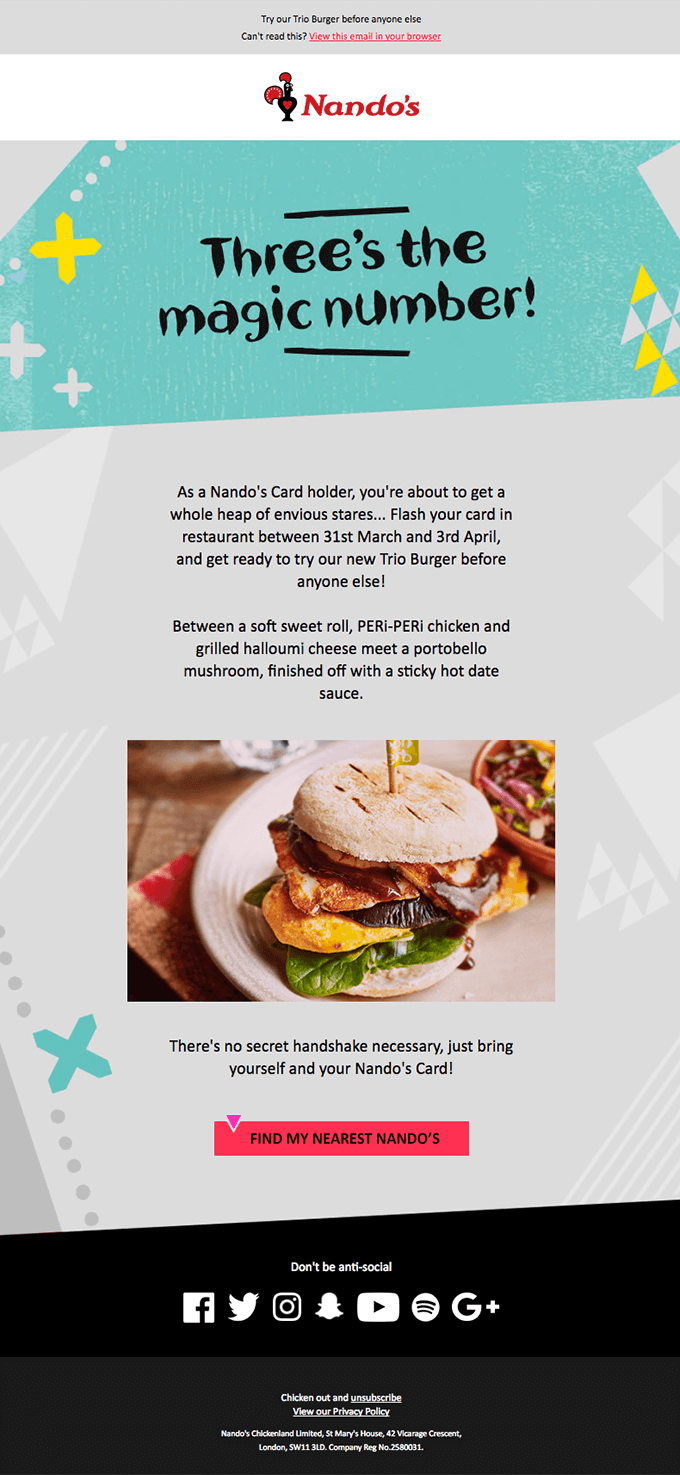How to increase restaurant sales with email marketing
When it comes to restaurant businesses, there is a consistent need for increased interaction from your audience.
Email marketing is a great way to reach out to potential customers, highlighting key facets of a menu and compelling them to give the food a try. It’s also a great way to keep your current customers engaged, and hungry to come back for more.
But it can be tricky to set up a successful email marketing campaign without proper best practices in place.
Email marketing can open up the door for a number of possibilities for restaurants, including increased customers, increased retention, event opportunities, franchise potential, and more.
That’s because consumers want to interact with brands. And one of the best ways for them to do that is through dedicated email marketing initiatives that increase brand awareness, start meaningful conversations, and establish relationships.
In the United States alone, there are more than 1 million restaurant locations. That’s a large pool of competitors to fight against—especially for franchises and small businesses in congested areas.
But with an ROI of $38 for every $1 spent, restaurants can expect exciting results from their email marketing initiatives when executed well. Here’s a few tips so you can do just that.
1. Gather a robust list of contacts.
The first thing you’ll need to do when unveiling a full-fledged email marketing strategy is to curate a list of contacts.
To do this, promote a subscription on your restaurant website and applicable social media accounts. This gives consumers something to look forward to as signing up will lead to updates, promotions, and coupons.
Some restaurants may seek out paid lists to get the ball rolling, but this might not be the best choice for a small-town, local restaurant.
It’s better to roll out word-of-mouth marketing initiatives to drive brand awareness and make your presence known to start.
Attend events, promote an email newsletter, start conversations on social—these are ways to boost your credibility and get more people interested in frequent communication with your restaurant.
When you have a solid list, you can begin strategizing a way to entice them through email.
In some cases, this means rolling out a weekly or monthly newsletter. In others, it means reaching out and starting conversations more organically and on a one-on-one basis.
Similarly, brands can work with automated software to track user behaviors as they peruse a website to launch a lead nurture campaign to take users on a journey.
The possibilities are endless—but restaurants must first gather a strong list in order to start seeing results.
2. Roll out targeted emails with local promotions.
The next step in unveiling a successful restaurant email marketing campaign is to roll out emails that are targeted, personal, and promotional.
This doesn’t just mean promoting how great the food is or how easy it is to make a reservation. In order to get people interested in a restaurant new or old, brands should consider emails that offer exclusive deals and promotions.
When it comes to building a solid email reputation, a great way to dip your toes into it all is to offer deals and promotions.
Restaurant marketing can seem harder than other forms of digital marketing for brands. Because unlike some other industries, restaurants require consumers to get up and physically act. Success depends on the consumer being quite active.
That’s why restaurant email marketing campaigns can be tricky. They need to be engaging, bright, bold and compelling. They need to drive a very specific action that goes against what consumers innately do when passively scrolling through email on their phone.
But these deals can incentivize people to get moving. And that’s exactly what restaurants need to succeed.
Here’s an example from Nandos. In this email, you can see that by sending out emails promoting deals, the brand is encouraging more customers to come in and buy.

3. Take an omnichannel approach.
When brands take an omnichannel approach, they are allowing their audience to decide what their own journey with a brand will be—starting it and stopping it across a number of devices and mediums with ease.
Sixty percent of millennials expect consistent digital experiences when interacting with a brand.
That’s why restaurant brands need to take a more omnichannel marketing approach when it comes to brand promotion. And fusing email with social media is a great place to start.
Both social media and email are the two most popular ways for consumers to interact with brands online.
Nearly all communication is digital, and in the future, it will continue to focus heavily on the digital world as opposed to in-person. Meet them where they are—and when they’re not in your restaurant, that’s likely online.
By using your email campaigns to drive social media interaction, you’re ensuring your potential customers have more pathways to interact and stay up-to-date on all of the exciting new things headed towards your business.
Here’s an example from Storedge. The brand encourages users to follow them on social media facilitating more future conversations.

4. Use pixel tracking.
Pixel tracking might sound like a foreign concept to restaurant marketing teams. But it is actually an interesting and easy way to learn more about the behaviors of your email audience.
With the analytics and data these pixels provide, you can craft dedicated marketing campaigns that are personalized and impactful.
Marketers can embed these transparent pixel images into emails, and when a user opens an email, that pixel instantly tracks their behavior.
It can see where a user clicked to and what they did on a website.
This can provide powerful insights into your user’s behavior. As you have more data to learn from, you can then craft a strategy that provides the customer with the information they’re looking for right away as opposed to making them go searching for it.
Personalization in email marketing is extremely popular—and for good reason. It makes customers feel wanted and shows them that brands are actually invested in the relationships they’re building.
Restaurants can learn a lot from this data. They can learn where on their website customers are going, what menu items strike their fancy, if they’re searching for functions like reservations and more.
This puts restaurant teams on the path to success by allowing them to make adjustments to their overall strategy.
Wrap up
Restaurant owners might not think email can benefit them at first, but in actuality, email is one of the best ways for them to make an impact.
Email marketing campaigns drive ROI. They increase engagement, drive traffic and facilitate open and honest pathways for communication. But getting started with email isn’t the easiest thing if you’ve never done it before.
For restaurant marketing teams of all shapes and sizes, it’s important to follow these tips for building a successful marketing campaign via email:
-
Gather an extensive email list
-
Roll our creative and promotional emails geared towards your audience
-
Take an omnichannel approach to all digital marketing initiatives
-
And invest in pixel tracking to pinpoint audience behavior.
These four tips are simple, but effective and can put restaurants one step closer to global acclaim.
Ready to dive deeper into crafting quality content? Check out this blog post.MOST RECENT ARTICLES
Want to engage your audience and grow your brand? Try Emma's robust easy-to-use product today.













